How to Achieve 10x ROI in Digital Marketing: The Ultimate 2025 Guide
In today’s fiercely competitive digital landscape, merely participating isn’t enough. Businesses are constantly seeking ways to not just survive, but to thrive, and the benchmark for exceptional success has become clear: achieving a 10x return on investment (ROI) in digital marketing. This isn’t a mythical figure; it’s an ambitious yet entirely attainable goal that signifies your marketing efforts are not just profitable, but exponentially so. A 10x ROI means that for every dollar invested, you’re generating ten dollars in net profit, transforming your marketing spend from a cost center into a powerful revenue-generating engine.
This comprehensive guide is designed to be your definitive roadmap for maximizing your digital marketing ROI in 2025. We will delve into advanced, actionable strategies across the most critical digital channels, including cutting-edge Search Engine Optimization (SEO), precision-targeted Pay-Per-Click (PPC) campaigns, high-impact content marketing, dynamic social media engagement, personalized email marketing, meticulous Conversion Rate Optimization (CRO), and robust data analytics. By integrating these high-impact areas, businesses can not only significantly boost their online visibility and drive consistent, qualified traffic but also convert that traffic into loyal, high-value customers, ultimately leading to substantial and sustainable business growth.
Understanding ROI in Digital Marketing: Beyond the Basics
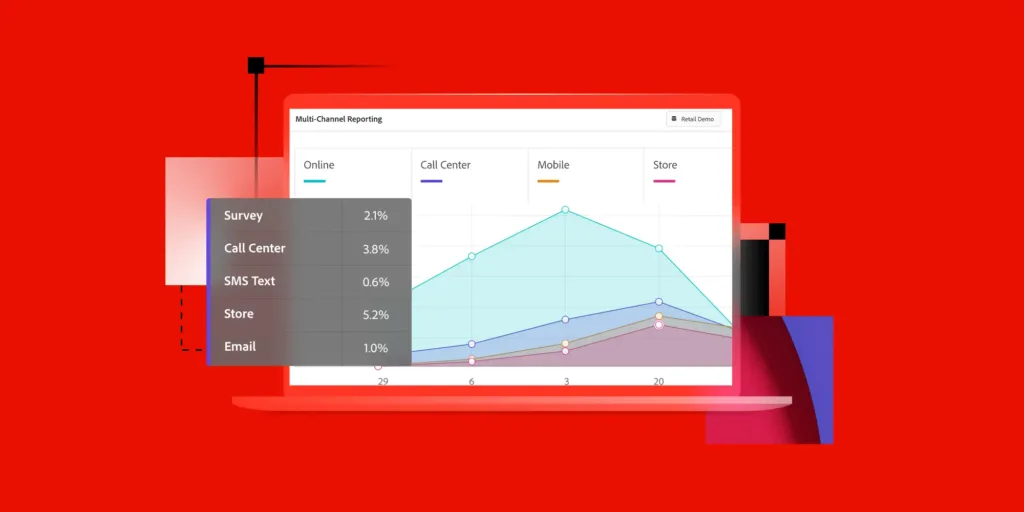
Before diving into strategies, it’s crucial to grasp the true meaning of ROI in the digital realm. ROI measures the profitability of your marketing efforts, calculated by dividing the net profit from a campaign by the total cost invested. For example, if a campaign costs $1,000 and generates $10,000 in net profit, your ROI is 10x. This metric moves beyond vanity metrics like impressions or clicks, focusing squarely on the financial impact of your marketing activities. Achieving a 10x ROI signifies exceptional performance and a highly efficient marketing machine.
A. Purpose: The Guiding Principle

At the very core of the 10x Action Plan lies Purpose. This involves understanding the underlying reason for your actions to guide decisions. Before launching any campaign, ask: Why are we doing this? What fundamental problem are we solving for our customers? What is our brand’s unique value proposition? A clear purpose provides direction, ensures all efforts are aligned, and fuels motivation, preventing wasted resources on misdirected initiatives. It’s the philosophical bedrock upon which all subsequent actions are built.
B. Goals: Setting the Benchmark for Success

Once your purpose is defined, the next step is setting Goals. These are clear, achievable objectives designed to provide focus and motivation. For a 10x ROI, goals must be ambitious yet realistic, and crucially, measurable. Instead of vague aspirations, think SMART goals: Specific, Measurable, Achievable, Relevant, and Time-bound. Examples include:
- Increase organic traffic by 300% within 12 months.
- Achieve a 500% ROAS (Return on Ad Spend) for specific PPC campaigns.
- Boost conversion rates by 200% on key landing pages.
- Generate 10x more qualified leads from content marketing efforts.
These quantifiable targets provide a clear benchmark against which performance can be assessed.
C. Strategies: Developing the Master Plan

With clear goals in place, the focus shifts to Strategies – developing effective plans to reach the established goals. This involves outlining the broad approaches and methodologies you will employ across your digital channels. For instance, if a goal is to increase organic traffic, a strategy might be to “dominate niche long-tail keywords through comprehensive pillar content.” This is the ‘what’ and ‘how’ at a high level, connecting your purpose and goals to actionable plans. It’s about choosing the right battles and the overall approach to win them.
D. Tactics: Executing with Precision
Tactics are the specific actions implemented to execute strategies effectively. These are the granular steps that bring your strategies to life. Following the example above, if the strategy is to dominate long-tail keywords, the tactics would include:
- Conducting in-depth long-tail keyword research using advanced tools. [1]
- Creating 2,500-word “how-to” guides optimized for specific long-tail queries. [9]
- Building internal links from high-authority pages to new content. [13]
- Acquiring backlinks from relevant industry blogs through guest posting. [16]
Tactics are the day-to-day operations that drive progress towards your strategic objectives.
E. KPIs: Measuring What Matters

KPIs (Key Performance Indicators) are crucial for measuring success through specific, quantifiable indicators. While goals define what you want to achieve, KPIs track your progress towards those goals. They are the vital signs of your marketing health. For a 10x ROI, KPIs might include:
- Organic Traffic Growth: Percentage increase in visitors from search engines. [1]
- Conversion Rate: Percentage of visitors who complete a desired action. [2]
- Customer Acquisition Cost (CAC): Cost to acquire a new customer.
- Return on Ad Spend (ROAS): Revenue generated per dollar spent on advertising.
- Lead-to-Customer Conversion Rate: Efficiency of turning leads into paying customers.
- Customer Lifetime Value (LTV): The total revenue a customer is expected to generate over their relationship with your business.
Regularly monitoring these KPIs allows for real-time adjustments and ensures you stay on track for your 10x ROI.
F. Your Endgame: The Ultimate Vision
At the bottom of the 10x Action Plan, “Your Endgame” represents the ultimate desired outcome. For businesses, this is typically exponential growth, market leadership, and sustained profitability. It’s the realization of the 10x ROI, transforming your business into a highly efficient, revenue-generating machine that consistently outperforms competitors. This holistic framework ensures that every digital marketing effort is purposeful, strategic, and measurable, driving you towards your ultimate business objectives.
1. Mastering Search Engine Optimization (SEO) for Sustainable Growth
Search Engine Optimization (SEO) is the cornerstone of any successful digital marketing strategy, offering unparalleled long-term benefits by increasing organic traffic and establishing your brand as an authority. In 2025, SEO is more nuanced than ever, demanding a holistic approach that prioritizes user intent and technical excellence.
A. Advanced Keyword Research & Strategy
Effective keyword research is the foundation of high-ROI SEO. It’s no longer just about high-volume short-tail keywords; it’s about identifying the precise terms your target audience uses at every stage of their buyer’s journey.
- Long-Tail Keyword Power: Focus heavily on long-tail keywords (phrases of three or more words). While they have lower individual search volumes, they account for the majority of search queries (up to 92%) and boast significantly higher conversion potential due to their specific intent. For instance, “best digital marketing agency in Lahore for small business” is more likely to convert than “digital marketing.” These keywords face less competition, making it easier for new or niche websites to rank.
- Search Intent Alignment: Understand the four types of search intent (Informational, Navigational, Commercial Investigation, Transactional). Your content must precisely match the user’s intent. A query like “best digital marketing agency” has commercial investigation or transactional intent, requiring content that compares options or facilitates hiring.
- Topical Authority & Content Clusters: Beyond individual keywords, build topical authority by creating comprehensive content clusters around broad subjects. This involves developing “pillar content” (often 2,500+ words) that covers a topic in depth, linking to supporting “cluster content” that addresses specific long-tail queries. This signals to Google that your website is a reliable and authoritative source, boosting overall domain authority and ranking potential.
- Tools for Discovery: Leverage tools like Google Keyword Planner, Google Trends, Ahrefs/Semrush, and Answer The Public. Analyze current converting search queries from your analytics, mine competitor content, and identify user questions from customer support interactions to uncover valuable long-tail opportunities.
B. Meticulous On-Page Optimization

On-page SEO involves optimizing individual web pages to achieve higher rankings and attract more relevant traffic.
- Strategic Keyword Placement: Integrate primary keywords naturally in your URL, title tag (preferably at the beginning), within the first 150 words of content, and in H1, H2, or H3 tags. Use synonyms and Latent Semantic Indexing (LSI) keywords throughout the body text, maintaining a keyword density of approximately 1-3%.
- Compelling Meta Tags: Craft optimized meta titles (under 60 characters) and meta descriptions (around 155 characters) with primary keywords. These snippets appear in search results and significantly influence click-through rates (CTR).
- Hierarchical Heading Structure: Utilize an H1 tag for the main title, H2s for major sections, and H3-H6 for sub-sections. Headings should be descriptive, concise, and engaging, breaking up text and enhancing readability.
- Image & Multimedia Optimization: All images should have descriptive filenames and optimized ALT text incorporating relevant keywords. Incorporate various forms of multimedia (images, charts, infographics, videos) to enhance user engagement.
- Readability & User Experience (UX): Chunk content into short sentences and paragraphs, using bullet points and subheadings. Simplified navigation, reduced bounce rates, and an intuitive site structure are vital for keeping users engaged.
- Avoid Keyword Stuffing: Overusing keywords unnaturally can lead to penalties from search engines and negatively impact readability.
C. Robust Technical SEO

Even the most meticulously crafted content can fail without a strong technical foundation. Technical SEO ensures search engines can efficiently crawl, index, and comprehend your website’s content.
- Website Speed (Core Web Vitals): Optimize page load times by compressing images, leveraging browser caching, and utilizing Content Delivery Networks (CDNs). Focus on Core Web Vitals like Largest Contentful Paint (LCP), First Input Delay (FID), and Cumulative Layout Shift (CLS).
- Mobile-Friendliness: With Google’s mobile-first indexing, a responsive design that provides a seamless user experience across all devices is essential.
- HTTPS Security: Implement SSL certificates to secure website connections (HTTPS), a recognized ranking signal that builds user trust.
- Schema Markup: Add structured data (Schema Markup) to help search engines better understand content context, potentially leading to rich snippets in search results.
- Crawlability & Indexation: Set up and regularly monitor Google Search Console to identify and resolve crawl errors, submit sitemaps, and ensure proper indexing.
D. Strategic Backlink Acquisition & Internal Linking
Both internal and external linking are indispensable for building authority and visibility.
- High-Quality Backlinks: Backlinks (inbound links from other websites) are a primary ranking factor and crucial for building Domain Authority (DA).How to Achieve 10x ROI.
- Guest Blogging: Contribute expert articles to high-DA industry publications.
- Digital PR: Pitch data-driven studies or surveys to journalists.
- Link-Worthy Content: Create original research, tools, or comprehensive guides that naturally attract links.
- Broken Link Building: Identify broken links on relevant sites and offer your content as a replacement.
- Toxic Link Audits: Regularly audit your site for spammy or harmful links and disavow them using Google Search Console.How to Achieve 10x ROI.
- Effective Internal Linking: These hyperlinks direct users to other pages within your own website. They enhance navigation, distribute “link equity” across the site, and assist search engines in crawling and understanding your website’s overall structure. Use descriptive anchor text and link from high-authority pages to newer or underperforming ones.
2. Leveraging PPC Campaigns for Immediate & Scalable Results
Pay-Per-Click (PPC) advertising offers immediate visibility and can be a powerful tool for achieving high ROI when managed correctly. It’s about reaching potential customers precisely when they are searching for your products or services.
- Hyper-Targeted Ad Copy: Craft compelling ads that resonate deeply with your target audience’s needs, interests, and pain points. Use strong calls-to-action (CTAs) and highlight unique selling propositions (USPs).
- Precision Audience Segmentation: Utilize advanced targeting options on platforms like Google Ads and Meta Ads (Facebook, Instagram) to reach specific demographics, interests, behaviors, and even custom audiences. This ensures your ad spend is directed at the most qualified leads.
- Optimized Landing Pages: Design dedicated landing pages that are perfectly aligned with your ad copy and offer. These pages should be fast-loading, mobile-friendly, visually appealing, and have a clear, singular conversion goal with prominent CTAs.
- Continuous A/B Testing: Implement rigorous A/B testing for every element of your PPC campaigns—ad copy, headlines, images, CTAs, and landing page layouts. Continuously test different variations to determine what performs best and iteratively improve your results.
- Strategic Budget Management: Allocate your budget strategically across campaigns, keywords, and ad groups to maximize returns. Monitor performance closely and shift budget to top-performing areas. Focus on metrics like Cost Per Click (CPC), Cost Per Acquisition (CPA), and Return on Ad Spend (ROAS) to ensure efficiency.
- Conversion Tracking: Set up robust conversion tracking to accurately measure the ROI of each campaign. This data is essential for optimizing bids, refining targeting, and scaling successful campaigns.
3. Creating High-Quality, Conversion-Focused Content: How to Achieve 10x ROI
Content marketing is essential for building brand authority, engaging your audience, and nurturing leads through the sales funnel. In 2025, content must be more than just informative; it must be valuable, relevant, and strategically designed to drive action.
- Informative & Problem-Solving Blog Posts: Provide valuable information that directly addresses your audience’s pain points, questions, and needs. Aim for comprehensive guides and evergreen content, typically in the 1,500-2,500 word range, to establish authority and rank for competitive terms.
- Diverse Content Formats: Incorporate a variety of content types to cater to different preferences and stages of the buyer’s journey:
- Visual Content: Infographics, custom illustrations, and high-quality images enhance engagement and readability.
- Video Content: Explainer videos, product demonstrations, testimonials, and live streams are highly engaging and preferred by algorithms.
- Case Studies & Whitepapers: Showcase your expertise and proven results with in-depth case studies that highlight client success stories.
- Interactive Content: Quizzes, polls, and calculators can boost engagement and data collection.
- Consistent Publishing Schedule: Maintain a regular content schedule to keep your audience engaged, improve SEO signals, and build anticipation for new material.
- Content Promotion & Distribution: Don’t just create content; actively promote it across multiple channels. Share on social media, include in email newsletters, and explore syndication opportunities.
- Clear Calls-to-Action (CTAs): Every piece of content should have a clear purpose and guide the reader towards a desired action, whether it’s downloading a guide, signing up for a newsletter, or requesting a consultation.
4. Utilizing Social Media Marketing for Brand Love & Leads: How to Achieve 10x ROI
Social media platforms are powerful channels for reaching, engaging, and building communities around your audience. In 2025, social media marketing is about authentic connection and driving measurable business outcomes.
- Strategic Platform Selection: Don’t be everywhere; choose platforms that align with your target audience demographics and where your ideal customers spend their time. For example, LinkedIn for B2B, TikTok/Instagram for younger audiences, and Facebook for broader reach.How to Achieve 10x ROI.
- Engaging & Authentic Content: Share content that encourages interaction, such as polls, questions, user-generated content (UGC), and behind-the-scenes glimpses. Embrace creative storytelling and humanized messaging to stand out.
- Short-Form Video & Live Streaming: Platforms like TikTok, Instagram Reels, and YouTube Shorts continue to dominate. Leverage engaging short videos and live streams for capturing attention and building brand awareness. High-quality video production and editing are key.
- Social Commerce Integration: Integrate shopping features directly into social platforms (e.g., Instagram Shops, Facebook Marketplace) to create seamless buying experiences and capitalize on impulse purchases.How to Achieve 10x ROI.
- Proactive Outbound Engagement: Go beyond posting. Actively comment on influencer posts, participate in community discussions, and respond to user-generated content to reach new audiences and build genuine relationships. This strategy can significantly boost engagement.
- Targeted Social Media Advertising: Use the robust targeting capabilities of social platforms to reach specific segments of your audience effectively with tailored ad campaigns. Focus on conversion objectives and monitor ROAS closely.
- Influencer Marketing: Collaborate with relevant influencers whose audience aligns with your brand goals. Authentic partnerships can expand your reach and build credibility.
5. Implementing Email Marketing Campaigns for Nurturing & Retention
Email marketing remains one of the most cost-effective channels for nurturing leads, driving conversions, and fostering long-term customer relationships. Its direct and personal nature makes it ideal for achieving high ROI.
- Advanced Segmentation: Divide your email list based on demographics, behavior, purchase history, engagement levels, and interests. This allows for highly targeted messaging that resonates with specific segments, increasing relevance and effectiveness.
- Hyper-Personalization: Go beyond just using a first name. Personalize subject lines, content, and offers based on individual subscriber data and past interactions. This significantly increases open rates, click-through rates, and conversion rates.
- Automated Email Sequences: Set up automated email sequences (drip campaigns) to engage subscribers at different stages of the customer journey.How to Achieve 10x ROI:
- Welcome Series: Onboard new subscribers with valuable content and introduce your brand.
- Lead Nurturing: Guide prospects through the sales funnel with educational content and relevant offers.
- Abandoned Cart Reminders: Recover lost sales with timely reminders.
- Post-Purchase Follow-ups: Enhance customer satisfaction and encourage repeat purchases.
- Re-engagement Campaigns: Win back inactive subscribers. How to Achieve 10x ROI
- Compelling Content & Design: Craft engaging email content with clear value propositions, strong visuals, and prominent CTAs. Ensure emails are mobile-responsive and easy to read.
- A/B Testing Email Elements: Continuously test different subject lines, sender names, content layouts, CTAs, and send times to optimize performance metrics like open rates, click-through rates, and conversion rates.
- Focus on Customer Retention & Lifetime Value (LTV): Effective email marketing is crucial for building customer loyalty, encouraging repeat purchases, and increasing the overall lifetime value of your customers, directly boosting ROI.
6. Embracing Conversion Rate Optimization (CRO) for Maximized Value
Conversion Rate Optimization (CRO) is the art and science of optimizing your website and landing pages to convert a higher percentage of existing visitors into customers or leads. How to Achieve 10x ROI. It’s about maximizing the value of your current traffic, which directly impacts ROI.
- Enhanced User Experience (UX): Ensure your website is intuitive, easy to navigate, and provides a seamless experience across all devices. A positive UX reduces friction and encourages users to complete desired actions. How to Achieve 10x ROI.
- Clear & Compelling Calls-to-Action (CTAs): Guide users towards desired actions with prominent, action-oriented CTAs. Use strong verbs and create a sense of urgency or value. Test different placements, colors, and wording.
- A/B Testing & Multivariate Testing: Continuously test different layouts, messaging, visuals, forms, and CTAs on your landing pages and key website pages. Use tools to analyze which variations perform best in terms of conversion rates.
- User Journey Analysis: Map out the typical user journey on your website to identify potential drop-off points or areas of confusion. Use heatmaps, session recordings, and user surveys to gain insights into user behavior.
- Form Optimization: Simplify forms by asking only for essential information. Reduce the number of fields, use clear labels, and provide inline validation to minimize friction.
- Personalization on Site: Dynamically adjust website content or offers based on user behavior, location, or referral source to create a more relevant and engaging experience.
- Trust Signals: Incorporate trust elements such as customer testimonials, reviews, security badges, and clear privacy policies to build confidence and reduce hesitation.
7. Data Analysis & Continuous Adjustment: The Engine of Growth
Achieving and sustaining a 10x ROI is not a one-time task; it’s an ongoing process that requires continuous monitoring, analysis, and adaptation. The digital landscape is dynamic, with search engine algorithms constantly evolving and competitor strategies shifting.
- Key Performance Indicators (KPIs) for ROI:
- Organic Traffic: Total visitors from search engines.
- Keyword Rankings: Position of target keywords in SERP.
- Dwell Time/Time on Page: How long users stay on a page, signaling content quality.
- Bounce Rate: Percentage of visitors who leave after one page (lower is better).
- Conversion Rates: Percentage of visitors completing a desired action (e.g., purchase, lead form submission).
- Customer Acquisition Cost (CAC): Cost to acquire a new customer.
- Customer Lifetime Value (LTV): Total revenue expected from a customer over their relationship with your business.
- Backlink Growth: Number and quality of new backlinks acquired. How to Achieve 10x ROI.
- Domain Authority (DA) / Page Authority (PA): Benchmarks against industry peers, indicating cumulative SEO strength.
- Utilize Analytics Tools: Leverage powerful platforms like Google Analytics and Google Search Console for comprehensive performance tracking, identifying areas for improvement, and understanding user behavior.
- Regular Site Audits: Conduct periodic technical SEO audits to proactively identify and rectify issues like broken links, crawl errors, duplicate content, and site speed problems.
- Content Refresh & Optimization: Regularly update outdated content to maintain its relevance, accuracy, and freshness, which is favored by search engines. Expand on high-performing content to create pillar pages or content clusters.
- Competitor Analysis: Continuously monitor competitor strategies, keyword targeting, content approaches, and backlink profiles to identify new opportunities and how to achieve 10x ROI adapt your strategies accordingly.
- Algorithm Updates: Stay informed about Google’s frequent algorithm changes and adjust SEO strategies to align with the latest ranking factors and best practices.
Conclusion: Your Pathway to Exponential Digital Growth
Achieving a How to Achieve 10x ROI is not a pipe dream; it’s a strategic imperative for businesses aiming for significant growth in 2025 and beyond. It demands a multifaceted, data-driven, and continuously optimized approach that integrates every aspect of your online presence. How to Achieve 10x ROI. By meticulously mastering advanced SEO techniques, executing precision-targeted PPC campaigns, creating high-quality and conversion-focused content, engaging authentically on social media, nurturing leads through personalized email marketing, optimizing every conversion path, and relentlessly analyzing your performance data, you can transform your marketing investments into powerful engines of revenue.
This ultimate guide on how to achieve 10x ROI provides the blueprint. The key lies in consistent implementation, a commitment to continuous improvement, and a willingness to adapt to the ever-evolving digital landscape. By focusing on these high-impact strategies and making data-driven decisions, your business can not only maximize its marketing investments but also drive substantial, sustainable growth, positioning you at the forefront of your industry. The power to achieve exponential digital success is within your reach – it’s time to execute. Sources and related content.




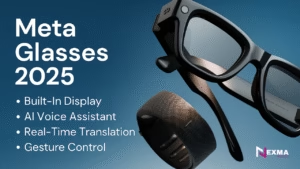
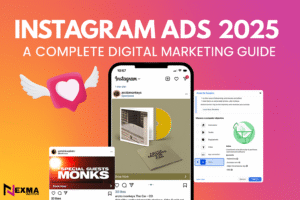
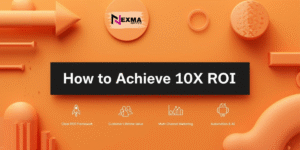
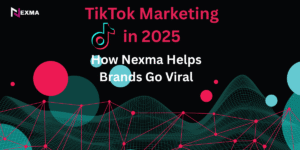
Add comment